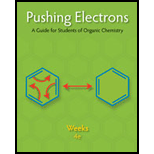
Concept explainers
Hydrogen is a Group I element and each hydrogen will contribute I valence electron. Carbon is a Group (Roman numeral) element and each carbon will contribute ___ (number) electrons. Every oxygen atom in a compound will contribute valence electrons.
Chloromethane has the molecular formula
and the number of valence electrons may be determined as follows. There are three hydrogen atoms, each of which contributes 1 valence electron; the single carbon contributes 4 electrons; and the single chlorine atom contributes 7 electrons, making a total of 14. A convenient tabular form of this calculation is
Interpretation:
The group number and the valance electrons in the given elements C and O are to be identified.
Concept Introduction:
In an atom, the electrons revolve around the nucleus in orbits/shells.
The shells are numbered/named from the side of nucleus. The last shell from the side of nucleus is called as ultimate shell or valance shell.
Answer to Problem 1EQ
Carbon is a Group IV element and each carbon will contribute 4 electrons. Every oxygen atom in a compound will contribute 6 valence electrons.
Explanation of Solution
The of electrons present in the last shell (valance shell) are called as valance electrons. The number of valance electrons is equal to group number.
As Carbon is group IV element, it has 4 electrons in the last shell.
In the same manner, Oxygen belongs to group VI and has 6 electrons in the last shell.
The number of electrons present in the last shell of an atom are considered as valance electrons and they can be identified by group number of the element.
Want to see more full solutions like this?
Chapter 1 Solutions
Pushing Electrons
- I don't understand what to put for final step. Does that just mean termination? And would a radical form when I add bromine to ch2 between the rings?arrow_forwardNonearrow_forward11 1 Which one of the following compounds would show a proton NMR signal at the highest chemical shift? (7pts) cl @amitabh CI CI d) Cl CICIarrow_forward
- Nonearrow_forwardH2SO4 (cat.), H₂O 100 °C NH₂arrow_forwardX Draw the major products of the elimination reaction below. If elimination would not occur at a significant rate, check the box under the drawing area instead. ది www. Cl + OH Elimination will not occur at a significant rate. Click and drag to start drawing a structure.arrow_forward
- Nonearrow_forward1A H 2A Li Be Use the References to access important values if needed for this question. 8A 3A 4A 5A 6A 7A He B C N O F Ne Na Mg 3B 4B 5B 6B 7B 8B-1B 2B Al Si P 1B 2B Al Si P S Cl Ar K Ca Sc Ti V Cr Mn Fe Co Ni Cu Zn Ga Ge As Se Br Kr Rb Sr Y Zr Nb Mo Tc Ru Rh Pd Ag Cd In Sn Sb Te I Xe * Cs Ba La Hf Ta W Re Os Ir Pt Au Hg Tl Pb Bi Po At Rn Fr Ra Ac Rf Ha ****** Ce Pr Nd Pm Sm Eu Gd Tb Dy Ho Er Tm Yb Lu Th Pa U Np Pu Am Cm Bk Cf Es Fm Md No Lr Analyze the following reaction by looking at the electron configurations given below each box. Put a number and a symbol in each box to show the number and kind of the corresponding atom or ion. Use the smallest integers possible. cation anion + + Shell 1: 2 Shell 2: 8 Shell 3: 1 Shell 1 : 2 Shell 2 : 6 Shell 1 : 2 Shell 2: 8 Shell 1: 2 Shell 2: 8arrow_forwardNonearrow_forward

 Chemistry: The Molecular ScienceChemistryISBN:9781285199047Author:John W. Moore, Conrad L. StanitskiPublisher:Cengage Learning
Chemistry: The Molecular ScienceChemistryISBN:9781285199047Author:John W. Moore, Conrad L. StanitskiPublisher:Cengage Learning Chemistry: Principles and PracticeChemistryISBN:9780534420123Author:Daniel L. Reger, Scott R. Goode, David W. Ball, Edward MercerPublisher:Cengage Learning
Chemistry: Principles and PracticeChemistryISBN:9780534420123Author:Daniel L. Reger, Scott R. Goode, David W. Ball, Edward MercerPublisher:Cengage Learning ChemistryChemistryISBN:9781305957404Author:Steven S. Zumdahl, Susan A. Zumdahl, Donald J. DeCostePublisher:Cengage Learning
ChemistryChemistryISBN:9781305957404Author:Steven S. Zumdahl, Susan A. Zumdahl, Donald J. DeCostePublisher:Cengage Learning
 World of Chemistry, 3rd editionChemistryISBN:9781133109655Author:Steven S. Zumdahl, Susan L. Zumdahl, Donald J. DeCostePublisher:Brooks / Cole / Cengage Learning
World of Chemistry, 3rd editionChemistryISBN:9781133109655Author:Steven S. Zumdahl, Susan L. Zumdahl, Donald J. DeCostePublisher:Brooks / Cole / Cengage Learning





